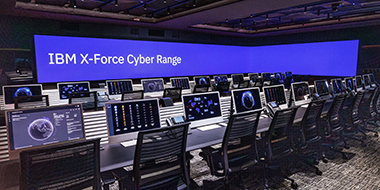Industries
Let’s get personal: CX transformation to a segment of 1
18 December, 2020 | Written by: Sharad Somanchi
Categorized: Industries
Share this post:
There are broadly three intertwined factors that are driving transformation in customer experience in 2020. And, while wrestling with the complexity behind such change can be daunting, the upside for businesses who get it right can in itself be transformational.
The first driver here is customers themselves. In a year that has accelerated online interaction in ways no-one could have foreseen, we consumers are not only more of a drain on customer service and support, we’re less tolerant of poor experiences and more vocal when things go wrong. So businesses that are already having to pivot to new models that place less reliance on physical infrastructure are simultaneously having to bolster – and rethink – their front-line customer-focused operations.
Then we have data. Businesses gather enormous amounts of information from our interactions with them and have access to far more data from other sources. This ranges from demographic insights into “people like us” to more nuanced and in-the-moment data around current affairs, live traffic or even the weather. All of this provides huge opportunities for more accurate targeting and segmentation: better for business, of course, but also appreciated by consumers – when it’s done right.
Which brings us to the final driver. With the maturing of machine learning and AI, businesses now have the opportunity to supercharge their targeting, not just segmenting to a particular demographic but using data-fuelled insights to create offers and content that can be personalised to the individual in real time. A segment of just one, if you will.
So how are businesses adapting to these CX drivers?
From analytics to journey orchestration
Whatever your business model, your customers are on a journey. It may be that they’re on an actual physical journey that means they need to switch from their mobile to their smart TV, for instance. Or it may be that an online shopping experience has been interrupted by having to deal with a “real life” emergency. There are any number of ways that a customer’s experience with a brand might be disrupted, but despite this nonlinearity, they’ll expect a seamless, connected flow. Delivering against this expectation, while simultaneously personalising the experience to the individual, is a significant challenge.
Businesses first need to apply analytics to these journeys. They need to quantify and understand how different stimuli contribute to the different outcomes they want, whether it’s subscriptions, purchases or content engagement. Such analysis requires businesses to face up not just to the volume of data involved but also its siloed nature. Data around web usage, transactions, social media interaction and contact centre engagement, for instance, are all typically captured and stored separately. Understanding journeys and triggers across this landscape is a data scientist-level task – but businesses can’t afford data scientist-level report times. This is one area where machine learning has a huge part to play.
Get the capture, storage, manipulation, analysis and – crucially – availability of your data right, and real-time journey orchestration (JO) becomes a possibility. JO works by recognising a trigger in real time – perhaps a customer has suddenly abandoned their virtual shopping cart – and acting on that trigger to stimulate behaviour that will bring the journey back to life. Machine learning is typically used to understand which stimuli are most likely to yield the desired outcomes for any given trigger: will our cart abandoner respond better to an SMS an hour later, perhaps, or is a more immediate nudge from a chatbot called for?
In essence, JO breaks down into three blocks: anticipation of possible events (particularly interruptions to the desired customer pathway), defining the optimal responses to those events and personalising the response itself wherever possible.
A CX-driven architecture
All of this has major implications for the data platforms, cloud strategy and technologies that businesses choose to deploy. But it also signals a fundamental shift in enterprise architecture, one that moves away from organisational silos and instead considers how data, operations and platforms are best configured to drive optimal customer experience at scale.
Businesses that recognise this are characterised by a culture that embraces the power of data and insights rather than considering “data” to be the domain of the analytics team. They have a clear understanding of what data they have today and – crucially – what data might currently be missing from their arsenal. They are not constrained by functional silos that put up data or communication barriers. They are powered by ecosystems that allow real-time data flows augmented by microservices and open APIs that embrace agile test-and-learn approaches. And they balance the need to optimise and personalise customer experience with an unwavering respect of the sanctity of each customer’s data.
Talking of journeys…
Getting to this state of CX-driven operation and architecture can be daunting. CIOs face the challenge of application modernisation: how can they move from legacy systems to scalable, real-time platforms when budgets are tighter than ever. CMOs must wrestle with breaking down channel silos across communication platforms to unlock the possibilities of holistic journey orchestration. Meanwhile CIOs are facing up to the need not just for new technology but for new skills if they’re going to succeed in capitalising on the potential represented by machine learning and AI.
At IBM we’ve put a lot of thought into how we can support businesses facing up to this journey. One important factor here is our strategic partnership with Adobe, which was taken to a new level last summer. This has yielded a series of preconfigured “accelerators” that address key challenges like siloed channels so businesses – even in tightly regulated industries – can kickstart the process of operationalising customer data. And, of course, there’s our customer-driven innovation model. Where better to explore real-time personalisation than in an environment like the IBM Garage that puts the empathy into customer experience?
I explored many of these issues in more detail in a recent white paper, part of a collaboration with Adobe. The main focus of the paper is the media industry, but the core arguments – and much of the practical discussions around technology and strategy – will apply across to most customer-facing businesses. And there’s no denying that – for any customer-facing business – this is a period of great excitement and opportunity.
Download your copy of the IBM & Adobe report here.
To learn more about the IBM & Adobe partnership, click here.
And for a free IBM CX rapid assessment, please contact me direct.

Adobe Practice Lead for IBM iX
Achieving sustainability ambitions with IBM AI technology
I recently attended The Economist Sustainability Week where I had some interesting conversations with other Heads of Sustainability. The one common thread was the belief that there’s never been a more pressing time for urgent, effective action to achieve our sustainability ambitions. We are at a critical juncture. Stakeholders are demanding a greater commitment to […]
Streamlining Life Sciences Research: Simplifying Data Access with Design Principles
Life Sciences research and development is complicated: complex tasks are carried out in an environment of big data, specialised technology and regulated processes. The challenges of this complexity risks making processes and interactions iterative, slow and expensive. To accelerate innovation in the development of safe and effective treatments, Life Sciences organisations need to cut through these challenges […]
Outsmarting the Digital Rogues: Celerity’s Journey to SOC Modernization
Remember SolarWinds? The software update that delivered malware to thousands? Imagine a legacy security system, slow and reliant on signatures, like a grumpy old guard dog. It barks at familiar threats, but this wolf in sheep’s clothing (the update) slipped right by. Hackers lurked undetected for months, finally wreaking havoc. Legacy defences? Powerless. Moral of […]

